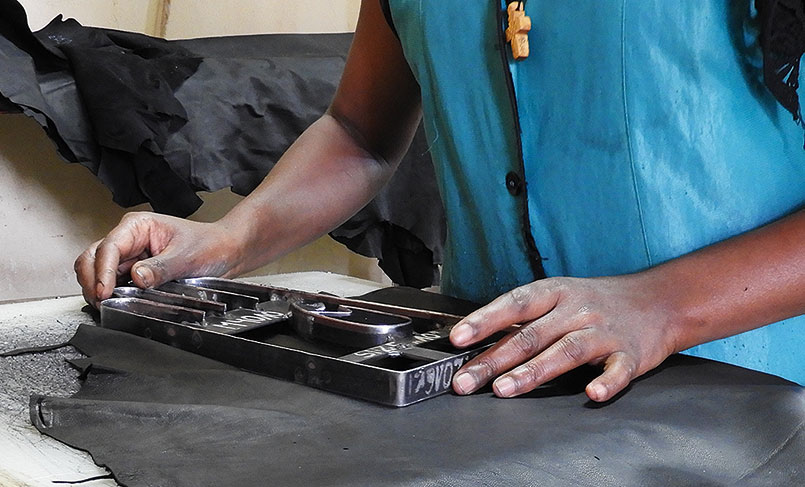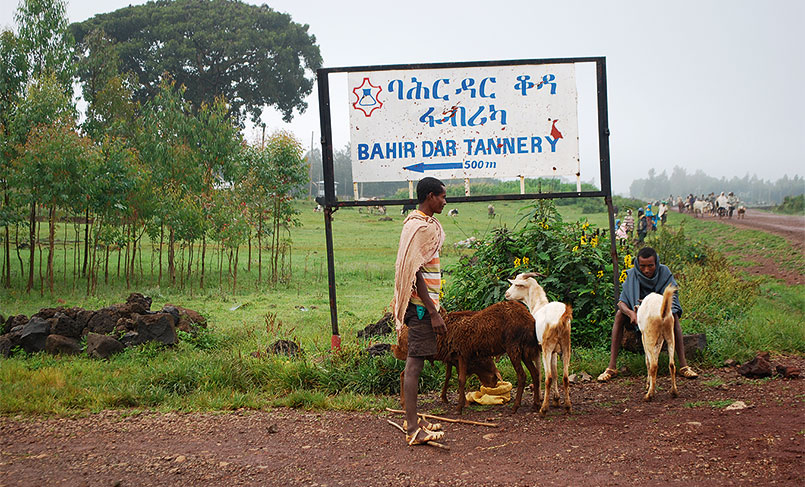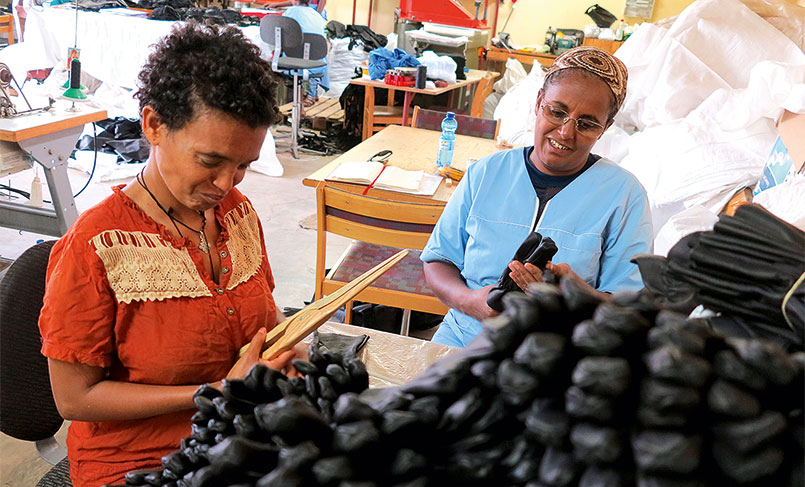BLUE NILE GLOVE FACTORY IN ETHIOPIA 🇪🇹
We are building an environmentally adapted tannery and starting a solar-powered glove factory with our partners in Ethiopia. The best glove leather in the world comes from the Ethiopian Highlands, so it makes sense to tan the skins and sew the gloves on site in Ethiopia. Up to now, Ethiopia has lacked this craftsmanship, though the country actually meets most requirements for its own glove industry. The Ethiopian Highlands, with peaks up to 4 550 metres, are sometimes referred to as the Roof of Africa. Here, over 20 million of the large Highland Hairsheep graze. They are one of Ethiopia’s main sources of income. Milk and meat are important elements, but most important are the soft yet durable skins, which in the leather industry are considered some of the best for glove manufacturing.

According to the government-run Ethiopia Sheep and Goat Productivity Improvement Program (ESGPIP), 14–18 per cent of Ethiopia’s export income comes from hides, leather and skin from sheep and goats. Almost all are sold as uncultivated raw materials. The tanning, punching and sewing takes place in other countries. Granting Ethiopia a larger part of the value chain is one of ESGPIP’s main objectives, in addition to improving animal husbandry and land use.
We want to be part of starting up a glove industry in Ethiopia and not just buy their raw materials. This way we contribute to development in a more sustainable way than if we had just donated money to an aid agency.
Of course we also have long-term economical goals here. But if we were only interested in making money, there are plenty of easier roads to take.
Collaboration with local partner
We at Granqvist has used Highland Hairsheep skin for decades. Eight years ago, we came in contact with an Ethiopian entrepreneur who wished to develop his tannery, Bahir Dar Tannery. We assisted in improving the tannery until it could produce leather with the same high quality as is found in countries with a major tanning industry. Controlling and reducing the tannery’s environmental impact was an important aspect in their work.

Tanneries are usually a dirty industry. But today, you can drink the waste water coming out of Bahir Dar Tannery.
In parallel, the idea was born to begin glove manufacturing in connection with the tannery. We received a grant from the Development Finance Institution of Sweden, Swedfund, to build a glove factory in the town of Bahir Dar together with the Ethiopian entrepreneur. The factory opened in 2011 and has 35 staff seamstresses. After five years of cultural pitfalls, recurrent power cuts and time-consuming red tape, but still consider the project a big success. Together with the local entrepreneur we decided to start a new, larger glove factory and close down the old one.
We decided to go ‘all in’ on sustainability. For instance, the entire power supply will come from rooftop solar panels.


But the way we see it, the most important sustainability aspect is the transfer of knowledge. Now, we take the craftsmanship to the next level. Our best seamstresses from Poland have held courses on site, we have improved the punching and several Ethiopian seamstresses have been trained in Poland.” The factory is due to open early 2018.
It is important to remember that we get a lot back from this. It is incredibly rewarding and instructive to build something together with the generous and committed people that we work with in Ethiopia.